Mile-deep underwater volcano off West Coast could erupt soon, scientists say
An underwater volcano off the coast of Oregon is gearing up for an eruption, according to volcanologists who are monitoring for activity.
The Axial Seamount -- an underwater volcano located about 300 miles off the coast of Oregon and 4,900 feet below the surface -- has been displaying behavior that indicates an eruption is imminent, researchers at Oregon State University say.
MORE: Iliamna volcano in Alaska rumbling despite being dormant for over 100 years, scientists say
Since the beginning of the year, the volcano has been inflating "like a balloon" as molten rock accumulates within, William Chadwick, research associate at Oregon State University, told ABC News in January.
Now, seismic activity near the volcano is ramping up as well. In June, more than 2,000 earthquakes were recorded in a single day, according to Oregon State University.
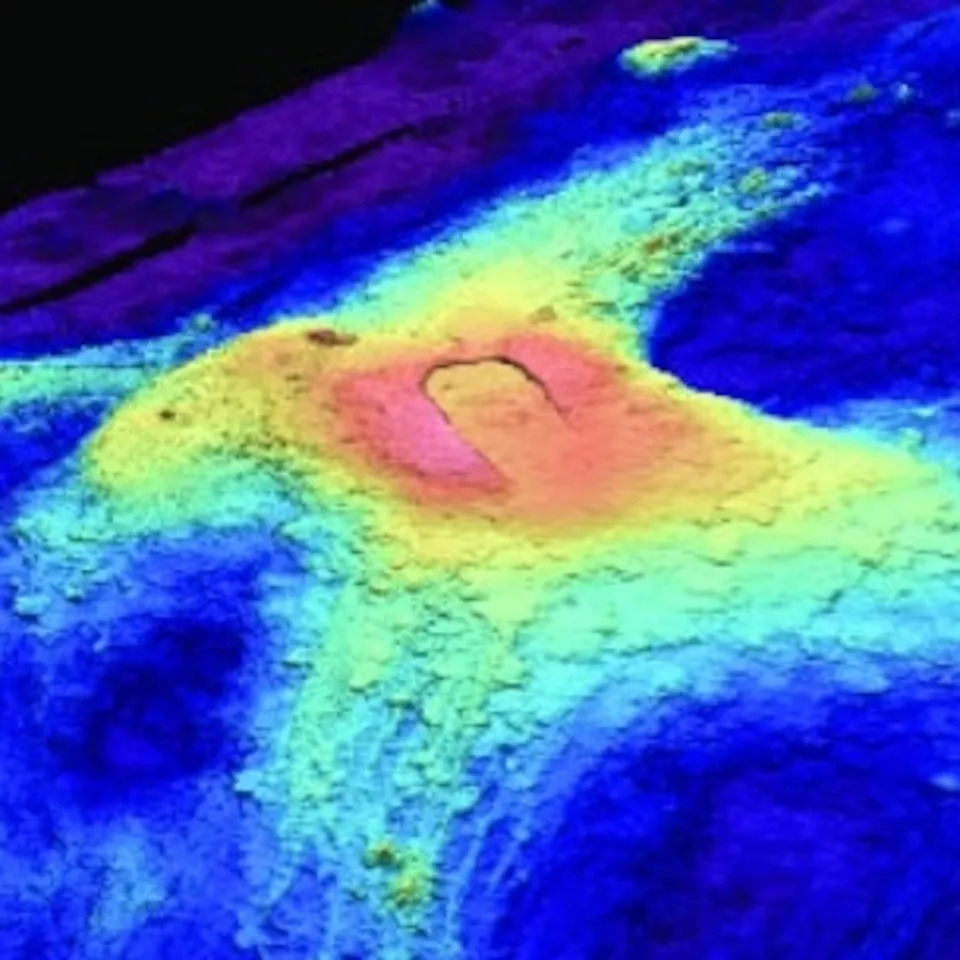 NOAA - PHOTO: In this image released by the Pacific Marine Environmental Laboratory at NOAA, a 3D image of Axial Seamount bathymetry is shown.
NOAA - PHOTO: In this image released by the Pacific Marine Environmental Laboratory at NOAA, a 3D image of Axial Seamount bathymetry is shown.The rate of earthquake activity has been "wavering up and down," the researchers said.
The volcano is still on track to erupt before the end of the year.
MORE: Icelandic volcano erupts again, prompting evacuations at nearby town and Blue Lagoon
The Axial Seamount, located along the Juan de Fuca Ridge, is the most active submarine volcano in the northeast Pacific and has displayed a "pretty repeatable pattern," Chadwick said. In the last 30 years since monitoring began, it has erupted three times -- in 1998, 2011 and 2015.
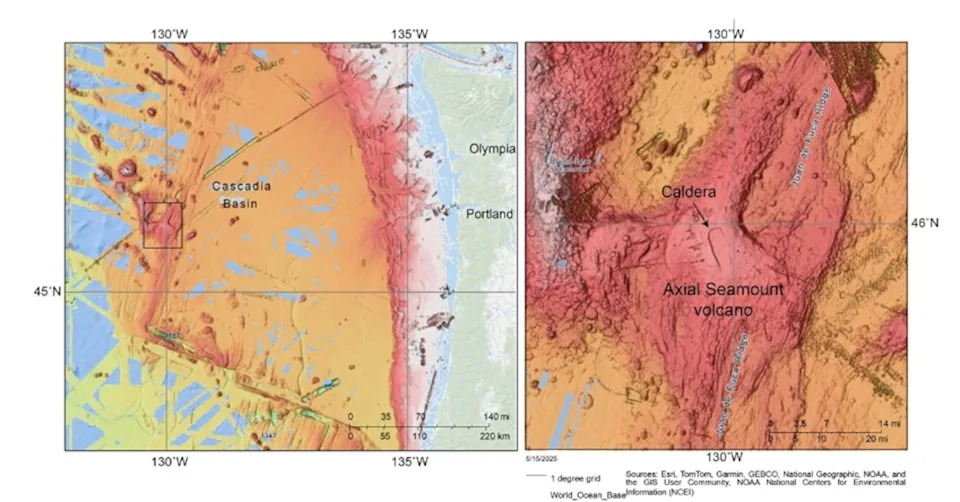 J. Ball/USGS - PHOTO: These bathymetric maps, created with data from NOAA's National Centers for Environmental Information (NCEI), show the location of Axial Seamount, and a detailed bathymetric view of Axial's edifice and caldera (central crater).
J. Ball/USGS - PHOTO: These bathymetric maps, created with data from NOAA's National Centers for Environmental Information (NCEI), show the location of Axial Seamount, and a detailed bathymetric view of Axial's edifice and caldera (central crater).Researchers monitor the volcano through instruments and cables that extend from the coast. Among them are seismometers, which provide real-time data on the earthquakes occurring near the volcano, Chadwick said.
"Miles of fiber optic cable are providing power and internet to instruments on the seafloor that allow us to monitor not just the seismic activity at Axial Seamount— which can help us better understand and predict how deep sea volcanoes work— but also how life on the seafloor responds to eruptions and perturbations in general," Rika Anderson, associate professor and department chair of biology at Carleton College in Minnesota, told ABC News.
MORE: Scientists solve mystery of 'zombie' volcano displaying signs of eruption for decades
The volcano typically expels controlled eruptions that are deep enough and far enough away from the coast to not threaten human lives or property, the researchers said.
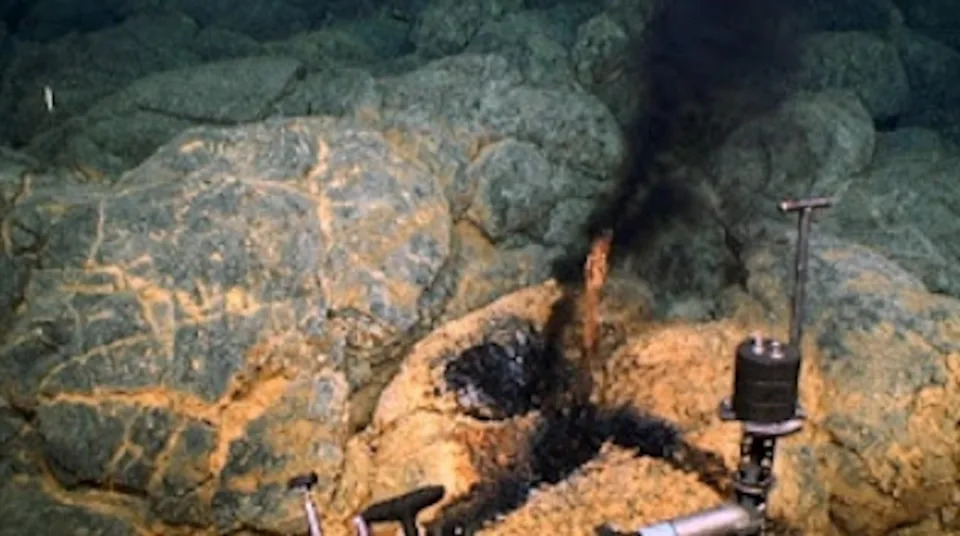 NOAA - PHOTO: In this image from a 2017 expedition to the Axial Seamount, a "mini-smoker" is shown on Axial's north rift zone.
NOAA - PHOTO: In this image from a 2017 expedition to the Axial Seamount, a "mini-smoker" is shown on Axial's north rift zone.Accurate predictions of eruptions at the Seamount could help volcanologists forecast future volcanic eruptions on land -- some that could potentially pose a danger to humans, the researchers said.
MORE: Mile-deep underwater volcano could erupt off West Coast this year, scientists say
It is difficult to predict volcanic eruptions because few are sufficiently well-studied enough to provide an accurate eruptive history over hundreds or thousands of years, according to the Smithsonian Institution's Global Volcanism Program.
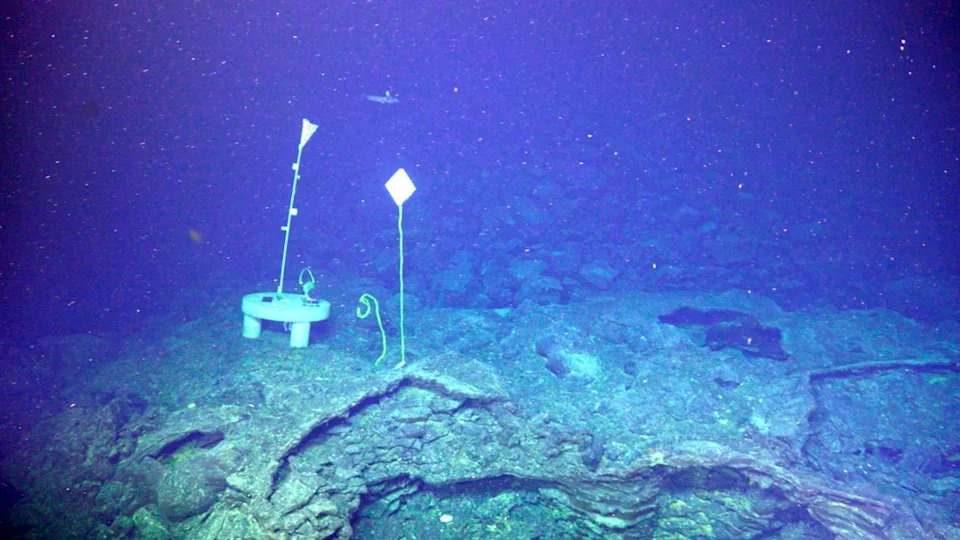 USGS - PHOTO: New benchmark AX-403 was deployed at the base of the western caldera wall of the Axial Seamount volcano. This photo was taken during the ROV Jason dive J2-1432 of the Axial Seamount Cruise, June 19 to July 2, 2022, from the R/V Thompson.
USGS - PHOTO: New benchmark AX-403 was deployed at the base of the western caldera wall of the Axial Seamount volcano. This photo was taken during the ROV Jason dive J2-1432 of the Axial Seamount Cruise, June 19 to July 2, 2022, from the R/V Thompson.Researchers are also monitoring the microbes that live deep beneath the seafloor, in the subsurface at hydrothermal vents in the caldera of the volcano itself, to see how they respond to the changes, Anderson said.
"Some of those microbes live in boiling hot water, some breathe iron or sulfur, they fight off viral infection just like we do, they may hold clues as to the earliest steps in the evolution of life on earth, and they play an important role in driving global biogeochemical cycles," Anderson said.





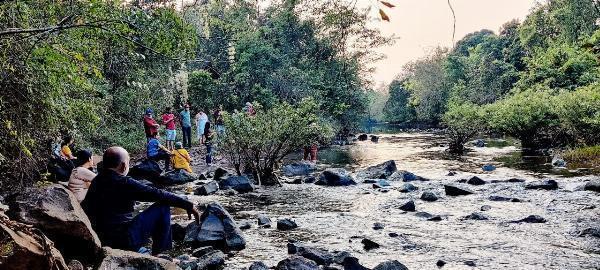




![Structural Adhesives Market [2028] Exploring Potential, Growth, Future & Trends](http://www.paseban.com/zb_users/upload/2025/08/20250831123209175661472915180.jpg)



